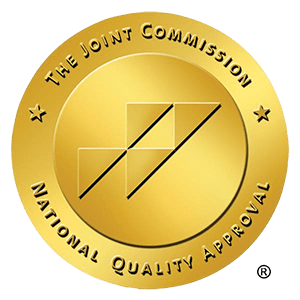In the depths of trauma, words often fail us. The pain we carry becomes too heavy to articulate, leaving us stranded in a sea of emotions without a lifeline. Yet, in the midst of darkness, there exists a beacon of hope: creative expression therapy. In this transformative journey, individuals harness the power of art, using the strokes of a paintbrush to navigate the turbulent waters of trauma. “From Pain to Paintbrush: Using Creative Expression Therapy to Overcome Trauma” explores the profound healing potential found within the realm of creative expression. Through this innovative approach, survivors are given the tools to rewrite their narratives, transforming anguish into artistry. Join us as we delve into the profound impact of creative expression therapy, uncovering the beauty that emerges from the ashes of adversity.
Creative Expression Therapy Techniques
Creative Expression Therapy encompasses a wide range of techniques that utilize artistic mediums to facilitate emotional expression, self-awareness, and healing. Each technique offers a unique avenue for individuals to explore their thoughts, feelings, and experiences in a safe and supportive environment. Here are some key techniques commonly used in Creative Expression Therapy:
Painting and Drawing
Painting and drawing are perhaps the most well-known and widely used techniques in Creative Expression Therapy. Through the act of putting brush to canvas or pencil to paper, individuals can visually represent their emotions, experiences, and innermost thoughts. Whether it’s abstract expressionism or realistic depiction, the process of creating art can be deeply cathartic and empowering.
Sculpting and Clay Work
Sculpting with clay or other materials offers a tactile and kinesthetic approach to Creative Expression Therapy. By molding, shaping, and manipulating the medium, individuals can externalize their inner world, often uncovering subconscious feelings and insights in the process. Sculpting allows for a three-dimensional exploration of emotions and experiences, providing a tangible form for expression.
Music and Sound Therapy
Music has a powerful ability to evoke emotions and memories, making it a valuable tool in Creative Expression Therapy. Whether through playing instruments, composing music, or simply listening to curated playlists, individuals can use music as a means of emotional expression and release. Sound therapy techniques, such as drumming circles or guided meditation with music, can also promote relaxation and stress reduction.
Dance and Movement
Dance and movement therapies harness the expressive potential of the body to promote healing and self-discovery. Through guided movement exercises, improvisational dance, or structured choreography, individuals can explore their emotions and release tension stored in the body. Dance therapy encourages a holistic integration of mind, body, and spirit, fostering a sense of connection and empowerment.
Writing and Journaling
Writing and journaling provide a verbal outlet for creative expression, allowing individuals to articulate their thoughts, feelings, and experiences through words. Whether it’s poetry, prose, or personal reflections, writing can help individuals make sense of their emotions and gain perspective on their journey of healing. Journaling prompts and exercises can guide individuals through the process of self-exploration and self-expression.
Incorporating Creative Expression Therapy into Clinical Practice
Creative Expression Therapy offers a dynamic approach to healing that engages clients on multiple levels, allowing for exploration and expression beyond traditional talk therapy. Integrating creative expression techniques into clinical practice can enhance therapeutic outcomes and provide clients with additional tools for self-discovery and healing.
- Assessment and Treatment Planning: Begin by assessing the client’s interests, preferences, and goals for therapy. Tailor treatment plans to incorporate creative expression techniques that align with the client’s needs and therapeutic objectives.
- Creating a Safe and Supportive Environment: Foster a non-judgmental and supportive atmosphere where clients feel comfortable exploring their emotions and creative impulses. Establish clear boundaries and guidelines for artistic expression within the therapeutic setting.
- Facilitating Creative Exploration: Encourage clients to experiment with various artistic mediums and techniques, such as painting, drawing, music, or movement. Provide guidance and support as clients explore their thoughts, feelings, and experiences through creative expression.
- Processing and Reflection: Facilitate discussions and reflections on the client’s artwork, helping them to make meaning of their creative expressions and uncover insights into their inner world. Use open-ended questions to stimulate dialogue and deepen the therapeutic process.
By integrating Creative Expression Therapy into clinical practice, therapists can expand their therapeutic toolkit and offer clients new avenues for self-expression and healing.
The Power of Art in Healing
Art has long been recognized as a potent tool for healing, offering a unique avenue for individuals to express, explore, and process their emotions. Whether through painting, drawing, music, dance, or other creative mediums, art provides a powerful means of self-expression and self-discovery. Here are some key ways in which art can facilitate healing:
Emotional Expression
Artistic expression allows individuals to externalize their innermost thoughts and feelings in a tangible form. Through painting, drawing, or sculpting, individuals can give voice to emotions that may be difficult to articulate verbally, providing a sense of relief and validation.
Self-Exploration
Engaging in art-making encourages introspection and self-reflection, inviting individuals to explore their beliefs, values, and life experiences. By creating art, individuals can gain insight into their own thoughts, behaviors, and patterns of relating to others, fostering a deeper understanding of themselves.
Stress Reduction
The process of creating art can promote relaxation and stress reduction by engaging the mind in a focused and absorbing activity. Whether it’s losing oneself in the rhythm of brush strokes or the melody of a musical composition, art provides a respite from everyday worries and distractions, allowing individuals to experience a sense of calm and centeredness.
Catharsis and Release
Art offers a safe and supportive outlet for emotional release, allowing individuals to express and release pent-up feelings of anger, grief, or sadness. Through the act of creation, individuals can channel their emotions into a productive and constructive endeavor, transforming pain into something beautiful and meaningful.
Empowerment and Agency
Engaging in art-making can foster a sense of empowerment and agency, allowing individuals to reclaim control over their own narrative and journey of healing. By creating something tangible and meaningful, individuals can reaffirm their own resilience, creativity, and capacity for growth.
Conclusion
At Core Recovery, we are dedicated to providing a transformative journey for individuals seeking to heal from trauma through creative expression therapy. Our commitment in Phoenix, Arizona, extends beyond mere counseling sessions; we offer a holistic approach that taps into the power of artistic expression as a catalyst for healing and growth. By fostering a safe and nurturing environment, we empower our clients to navigate their pain and channel it into meaningful artistic endeavors, ultimately guiding them towards a path of resilience and self-discovery.


